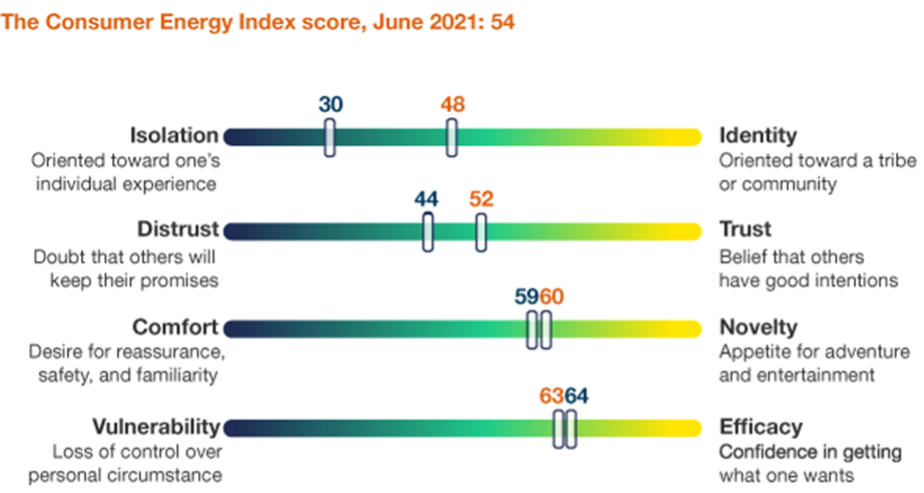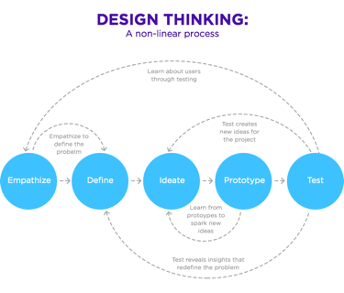
Subscribe
Be the first to know about our latest posts.
Ready to explore our services?
Focus on UX to Boost Customer Experiences
As our world is preparing to reopen, every company has a new opportunity to reshape their business in the next normal. The time is here to transmute the disruption into opportunity - to become customer-focused and deliver more personalized experiences for every step in the customer journey.
In just a short amount of time, a lot has been changed. Years of tech innovation and digital transformation expedited in just a matter of months. We learned that we could be resilient and agile in the face of disruption.
Customers evolved as well during this time. There was an acceleration in digital adoption, and customers became digital-first in their life and work. Hence, customer experience (CX) is now a significant competitive advantage for businesses. It is the most human and meaningful way to create tomorrow's business.
Investing in CX efforts can double your revenue within 36 months. That's right.
According to Forrester,
What does this mean for brands ?
-
Factor the ebb and flow of consumer emotion into your UX, messaging, product, and experience.
-
Validate consumers' growing trust in companies by proving your brand promise more urgently than before.
As businesses continue to adapt to the changing CX, user experience is one of the top priorities for companies to stay relevant. As companies continue to adapt to the changing CX, user experience is one of the top priorities for staying relevant. UX is one of the great differentiators and it is what sets both an organization's service and performance apart from the competition.
Get the Digital UX Right
Now is the time to have your brand's digital channels more attuned than ever. After all, a personalized experience is the most critical aspect of CX quality — even for digital.
This means requiring the right people, processes, and technologies required for digital user experience (UX) to deliver:
Great Value
Focus on providing a compelling value. Ask yourself - does the value that customers receive from your website or app align with their time, effort, and money invested in the experience?
Intuitive Presentation
For brands, having a tremendous intuitive interface or presentation is often the number one goal. Every website needs it! Focus on making the interface easy and effective, including the typography, layouts, graphical elements, and grid systems.
Excellent Interaction Design
See if the user interface is simple, efficient, and spurs emotions in your customers. Are your forms, responses, workflows, and controls well-defined?
Now, here's what to prioritize as your brand doubles down on digital UX based:
Expand and Scale Up Your Design Team
To make room for an elevated UX of your app or website, you will need a larger capacity and efficiency in skillset, people, structure, and processes. Once you have decided upon it, make sure to define your mission or goal or a set of values. Each brand has its industry-specific challenges. Hence, it is best to take your time to assess the situation and scale up the team for your design needs.
Hire External Help Where Needed
It might be challenging to scale up fast with only internal resources. Hiring new designers and onboarding them is eventually going to take more time. Choose a services firm that can offer flexibility, talent diversity, and fresh perspective. Many brands embrace having a dynamic mix to get the best to accomplish their goals.
Upgrade Your UX Expertise
Ensure you and your team know the best practices in critical areas such as navigation, content clarity, search, accessibility, etc. Conduct a UX audit every once in a while to understand the effectiveness and value of your work.
Review Your UX Critically to Make It Better
Evaluating the quality of your brand's digital properties' value, presentation, and interaction design is crucial as they play a vital role in improving CX. Look for a partner agency that can help you assess your products or services, recognize any core issues, conduct usability testing, and offer the right next steps to optimize the performance.
Bring Design Thinking to Improve Your Approach to UX
Design thinking is a unique methodology that helps to brainstorm a range of meaningful solutions to problems. Moreover, this basic framework is extremely user-centric, which is excellent for addressing complex issues.
Aimed at bringing practical innovation with a solution-focused view of things - design thinking can be your weapon to prioritize UX. Here's how it is done -
The Five Phases of The Classic Design Thinking Approach
Phase 1: Empathize
The first step is not to look at the market or industry; instead, focus on the user. This phase aims to properly understand a user's pain points, for example - what motivates them? Next, gather a realistic insight about the user and how your product or service can help them more.
Phase 2: Define
The second step is dedicated to describing the problem. After gathering all the insights from "empathize" phase, you can start to make sense of it by focusing on these critical questions -
What difficulties are your users coming up against?
What is the prominent user problem that your team needs to solve?
Phase 3: Ideate
This is the step where most designers love: coming up with possible solutions. At this point, you have completed a thorough research and know who the product or service is for, what it is meant to do for, and why it matters. Now your team can start by dreaming about the potential solutions.
Phase 4: Prototype
This fourth step is all about experimentation and turning ideas into reality. Finally, prototype is a scaled-down version of the product that incorporates the possible solutions identified in the previous phases. Here, using a tool is crucial to get a realistic idea of the finished service or product. This will give you ample opportunity to add sufficient details as you see fit.
Phase 5: Test
The fifth step in the Design Thinking process is user testing which is critical after prototyping. Again, there is a range of testing methods available. Based on the results, your team can either return to a previous step, find better solutions, or advance with the next steps of the solutions they're testing.
Customer Behavior Is Different—And the Customers Are, Too
As businesses have changed over a short period, so too have the consumers. People are staying home and adapting to the new changes in social, economic, and financial contexts. This has caused the consumers and their behavior to shift significantly. It has created inertia which can be filled with the company's readiness to anticipate the needs of their customers and serve them proactively.
How is your brand addressing the challenge of delivering high-quality CX at this time?
Questions, comments, or ideas? We are looking forward to sharing more details and discuss via inquiry.



